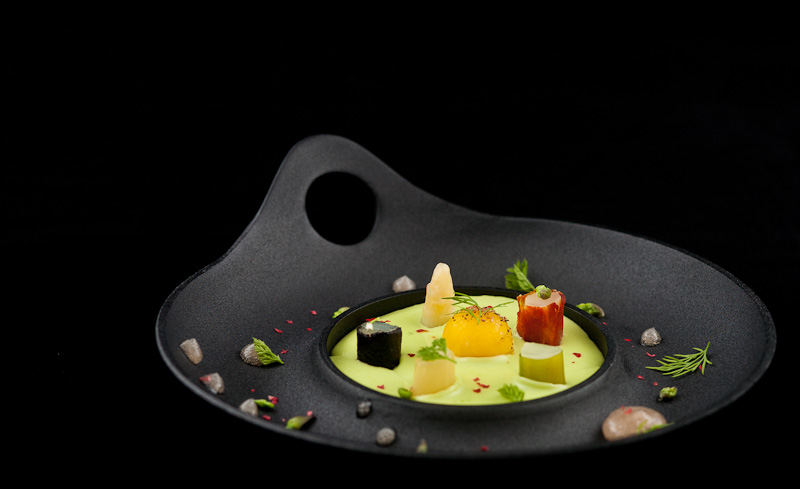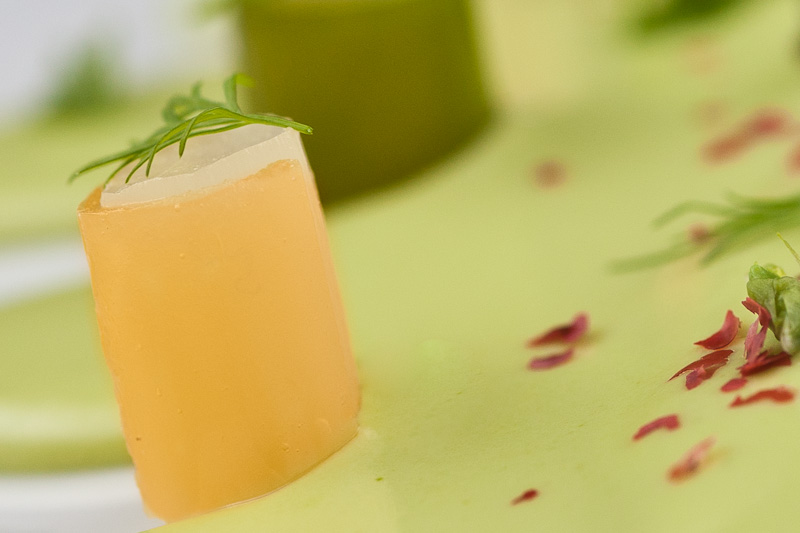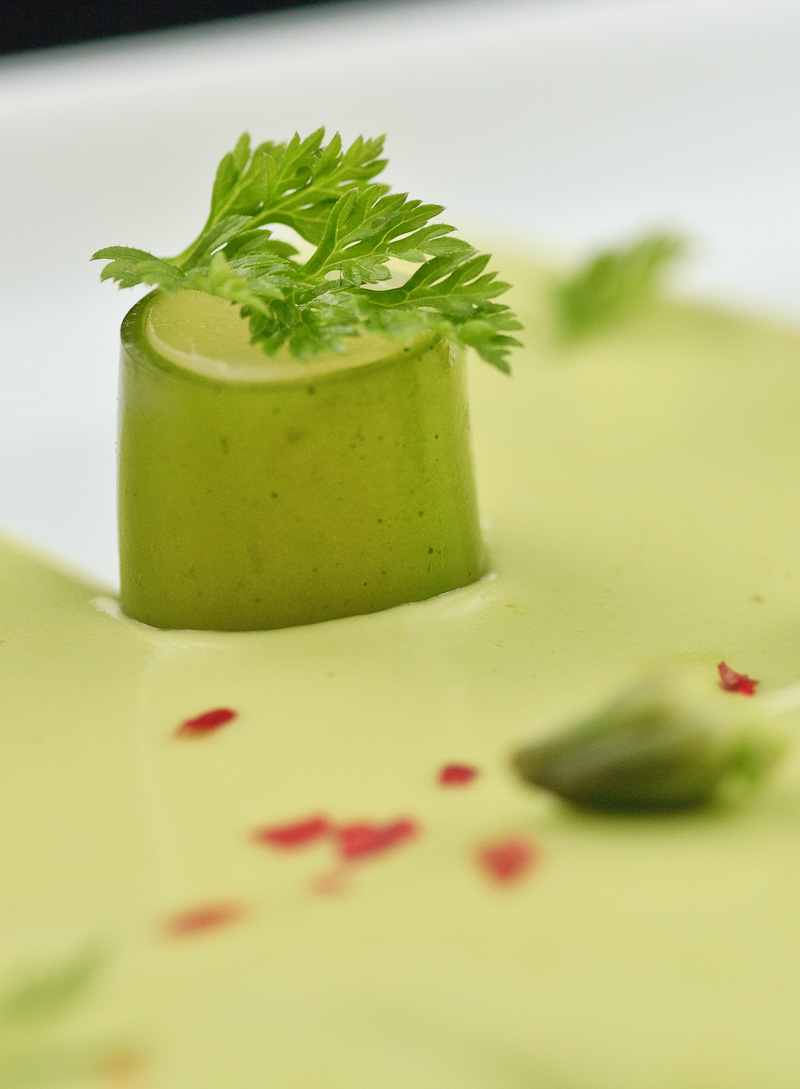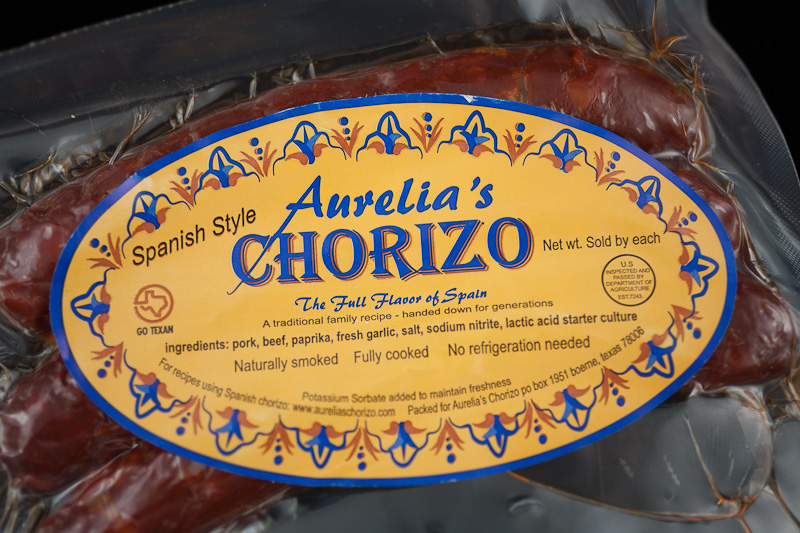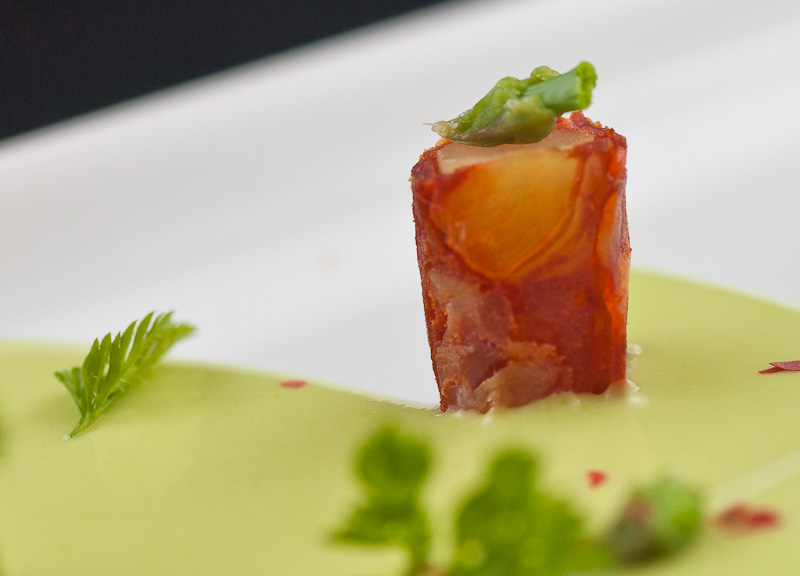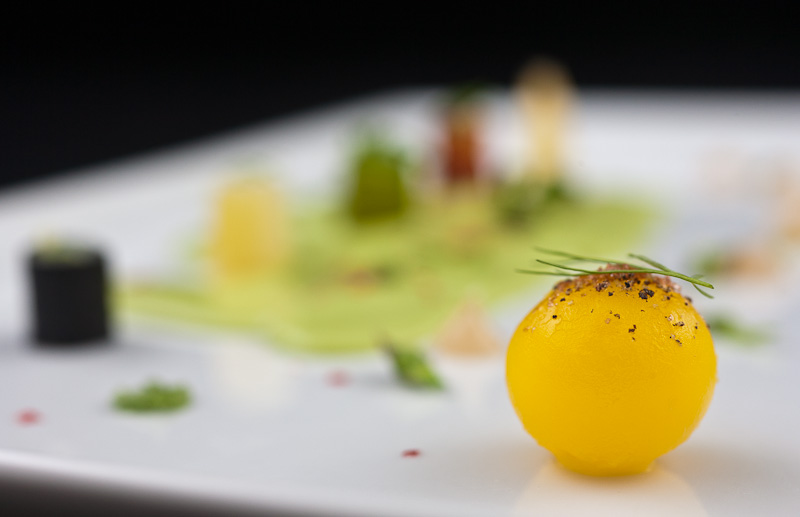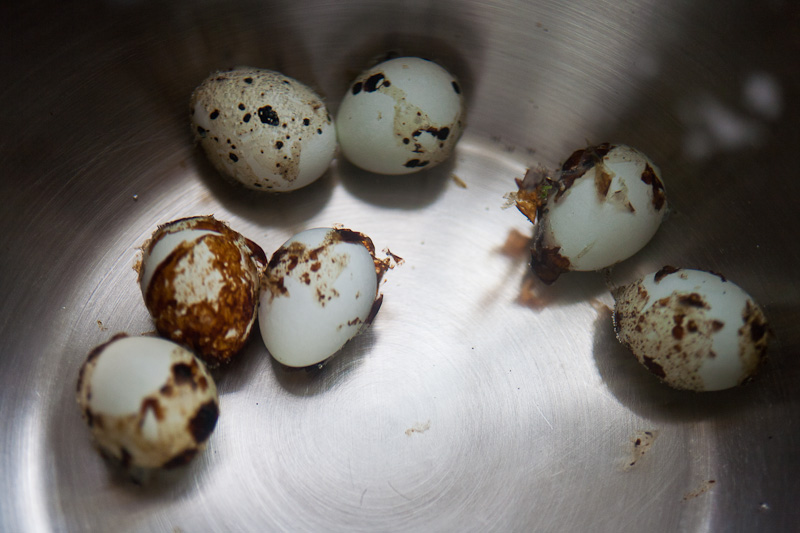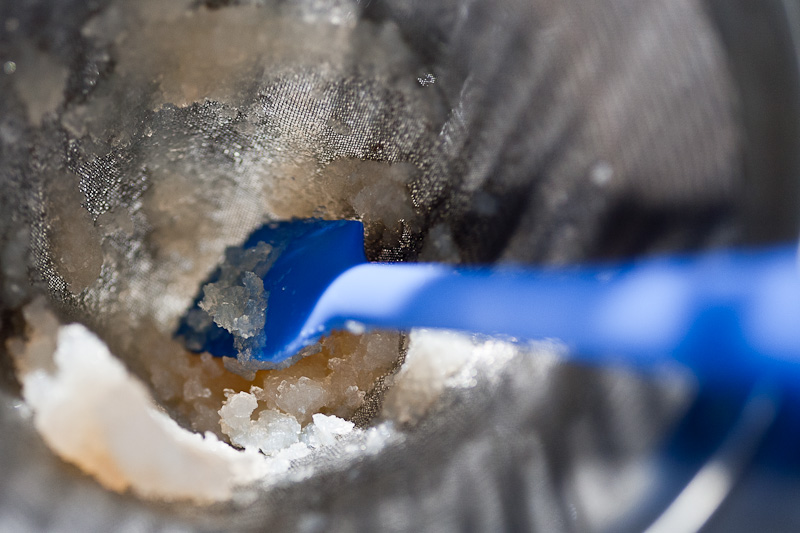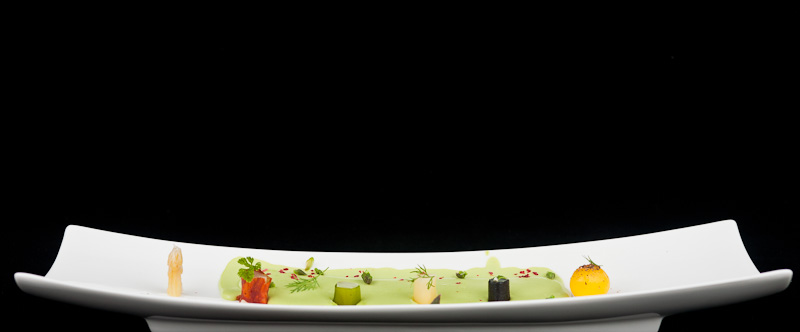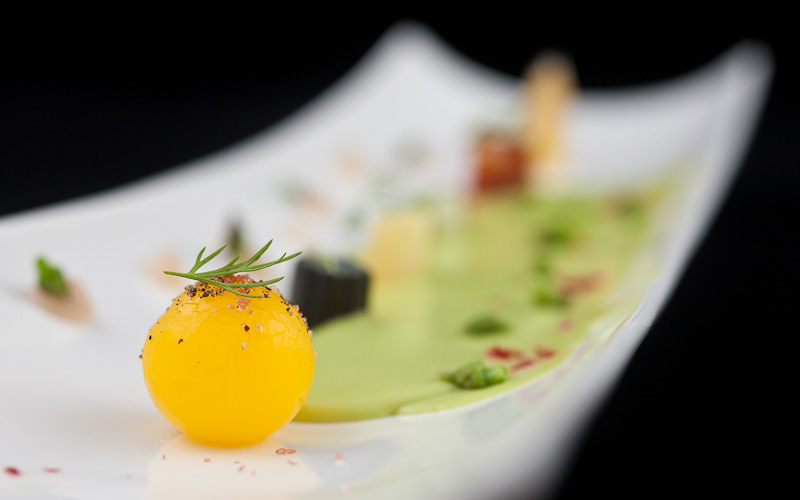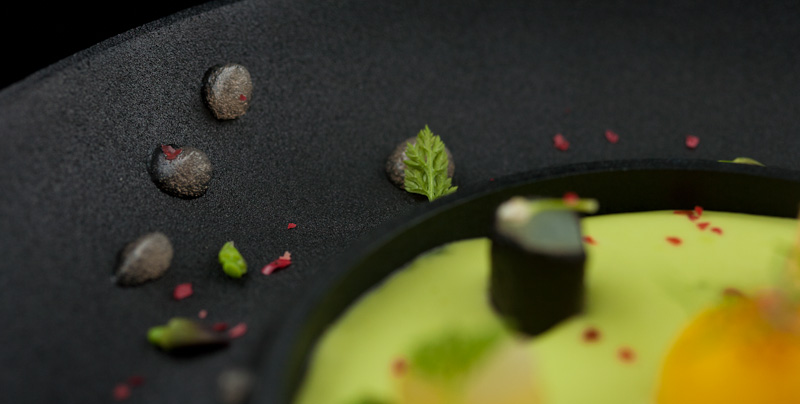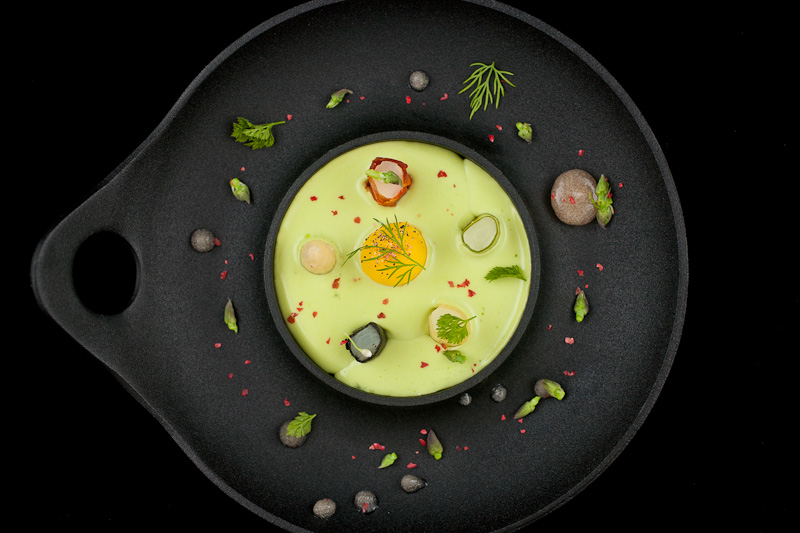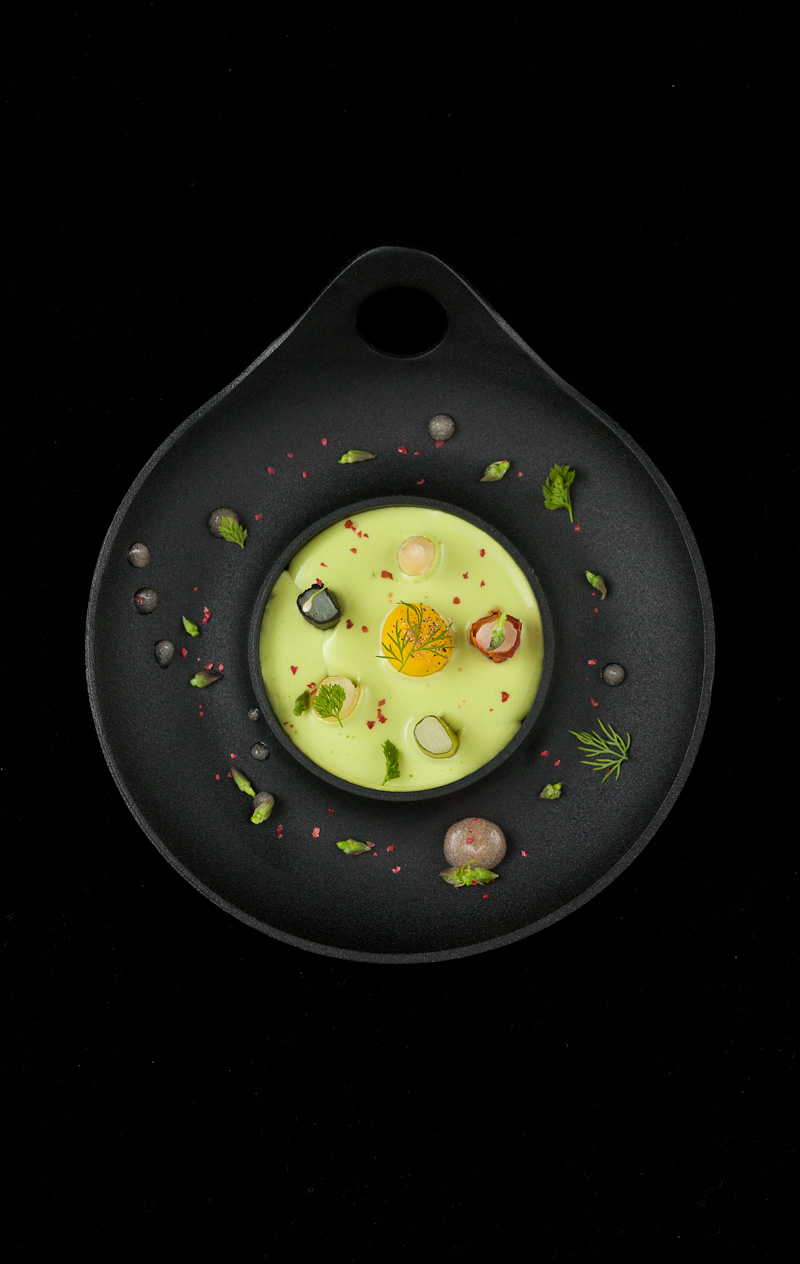
This weekend, Sarah had to go to Sonoma to work on ‘styling’ a wedding (I didn’t know what it meant either. “Styling” in this case refers to doing table decorations, setting up a guestbook table, and basically generating eye candy for the wedding). When she got home afterwards and I asked how it went, she said “I don’t know. I mean, they had a table, a birdcage, a bag of lemons, and a guestbook. And I was told to ‘set it up’. I mean, what do I do with some lemons and a birdcage? Do the lemons go inside the birdcage, or next to it, or what? I put them inside it. No one complained.”
Much as that sounded like a fun thing to sit back and watch, between you and me (shh) I was excited at the idea of just getting to play in the kitchen all day. And guys, I HELLA played in the kitchen. I played in this kitchen so hard.
Actually, ‘playing’ implies my day was filled with glee, which is totally misleading. This dish, beautiful though it is, is complicated and difficult. After my misfires with the Huckleberry dish and later with the Marcona Almond dish, I’m gun-shy when it comes to dishes that involve dextrous manipulations of gels. I was nervous going in, and dreaded making about half of this, honestly.
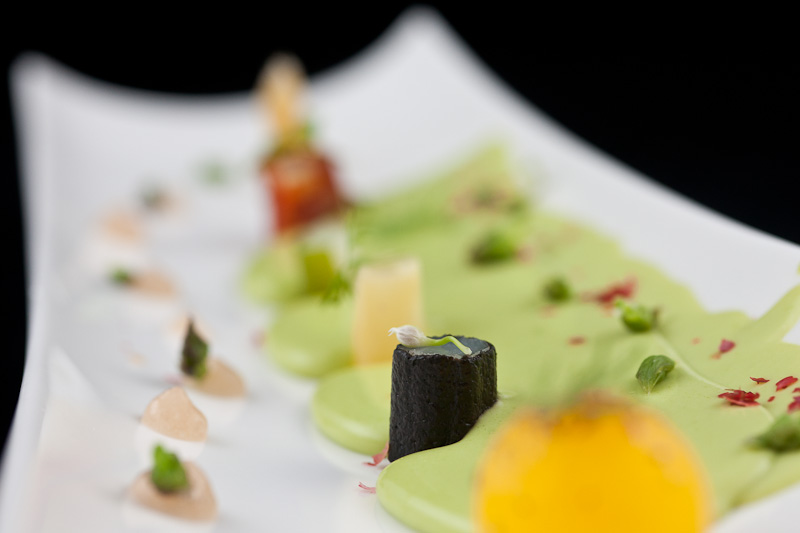
The idea here is that white asparagus is gently pickled and divided into 5 inch-long segments. Each segment is wrapped with a ‘flavor’. We start with a jacket made of black trumpet mushroom leather. At this point I need to admit that I’m not good at mushrooms; I grew up thinking “mushrooms” were brown button mushrooms that came in cans, and that the only thing they were useful for was sauteeing in butter until they ere crispy, then throwing them on an over-cooked steak to help “add some flavor”. I also have gotten quite sick in the past a few times, and I think it’s from eating shiitake mushrooms. So I’m a little wary of them. But I’ve noticed that Monterey Market and Berkeley Bowl have gigantic sections of exotic and beautiful mushrooms, so my curiosity since being in the bay area is piqued. Making trumpet mushroom leather is as easy as cooking the trumpets until they’re good and soft, pureeing them with some olive oil, then dehydrating the puree into a thin leathery sheet. When I tasted the final outcome I thought I was going to keel over from Awesomeness Overdose. These things are just magic; they’re almost buttery, salty, slightly grainy in texture, and packed with delicious flavor. I think I was trumpets garnishing all my meals from now on, even the Corn Pops I’m getting ready to eat in a few minutes here.
The next two flavor wraps were where things started to go wrong, however. First we have a wrap made of a sheet of gelled orange. COOKING the gel was straightforward, but the book says to spread the hot gel liquid onto a 8×12″ sheet of acetate. You’re supposed to sort of slide the liquid around until its coated the acetate, then let it set. I had to do this once before with Pineapple gel and it was a total pain. Not thinking, I cut the acetate as directed. I would advise against doing this in the future. Trying to keep a cup of liquid onto a sheet of acetate the size of a sheet of notebook paper is just impossible. You end up with a huge mess. I thought maybe the trick was to let the liquid cool a bit, so that it would be thicker when poured, but if I did this it set too quickly, and my ‘sheet’ was way too thick to actually roll around a tiny tube of asparagus. I kept having to scrape the gel up, reheat it to remelt it (degrading it in the process), then trying to spread it again. What I finally found was that I needed a way bigger working area. Photos in the book of chefs doing this show them using gigantic sheets of acetate. This makes sense; the bigger the sheet, the thinner you can spread the liquid without it running out all over your countertop. When I switched over to a larger sheet, things worked much more nicely, but at that point I’d wasted a few hours trying to figure out how to do this, so was feeling frustrated and rushed.
The same experience held true with the next wrapper, which was a sheet of herb-flavored gel. There’s a very exact balance that has to be struck for the thickness of these things; it’s hard to get it thin enough to wrap without breaking. Extremely difficult too was trimming the cylinders to square the ends after wrapping them with the sheets; it was delicate enough getting the wrappers around the cylinders (which were smaller in diameter than my pinky finger), but then trying to hold these tiny pieces in place while slicing through them with a knife resulted in me destroying them repeatedly.
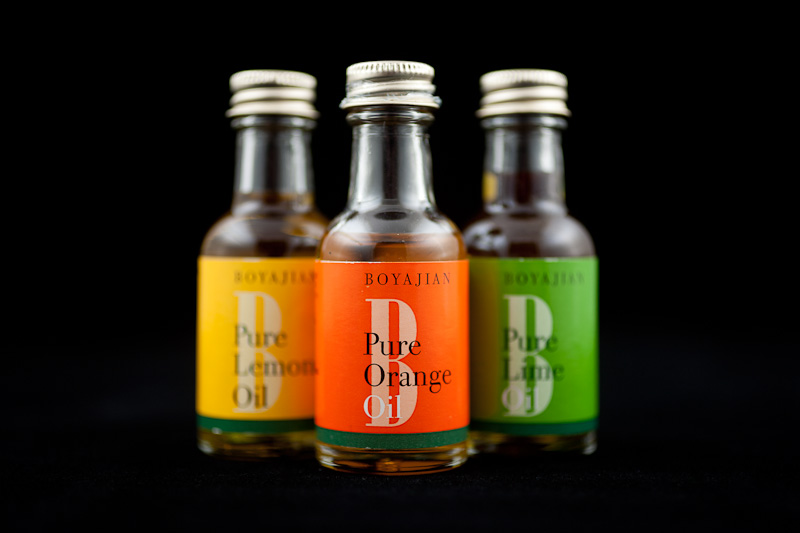
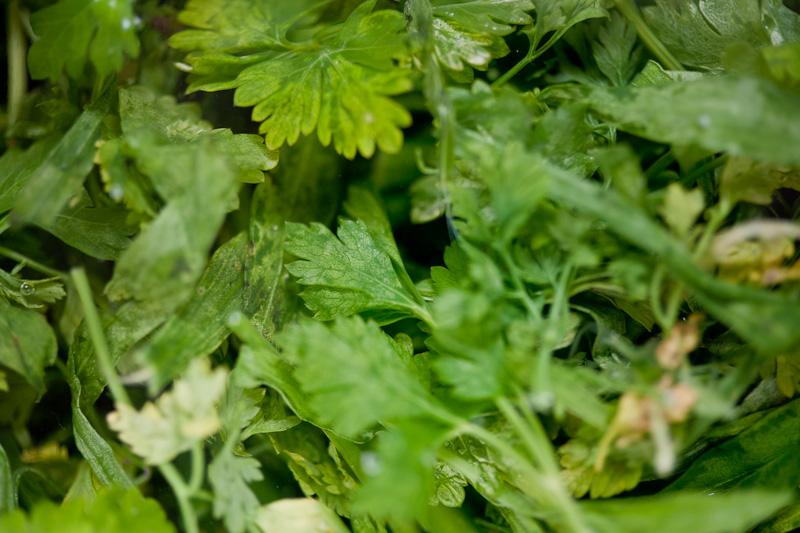
Having said that, the orange and wrapper sheets themselves tasted really nice. The orange flavor was kicked up by the use of orange oil (which is super duper powerful and awesome), and the herb sheet used nearly a half-pound of tarragon, chervil, parsley, and chives, so it was powerfully herby and delicious.
The final cylinder is wrapped with chorizo. Several months ago, a friend from work brought in some chorizo a friend of hers in Texas made and had started selling. Aurelia’s Chorizo is addictively delicious; it tastes sharply of sweet smoked paprika,and when sliced oozes pockets of spice and flavor. It’s amazing, and when I got my hands on a sample of it I immediately knew I wanted to use it in this recipe. I’m meant to slice it as thinly as possible with a meat slicer. I don’t own a meat slicer yet (it’s on my wish list, but I get some pretty heavy eye rolls from Sarah when I speculate about this one), so I first tried a mandoline. This was laughably terrible; the chunky texture of the chorizo just gummed everything up. So I had to suck it up and try my best with a knife. It was again difficult to get something thin enough to be wrappable without breaking.
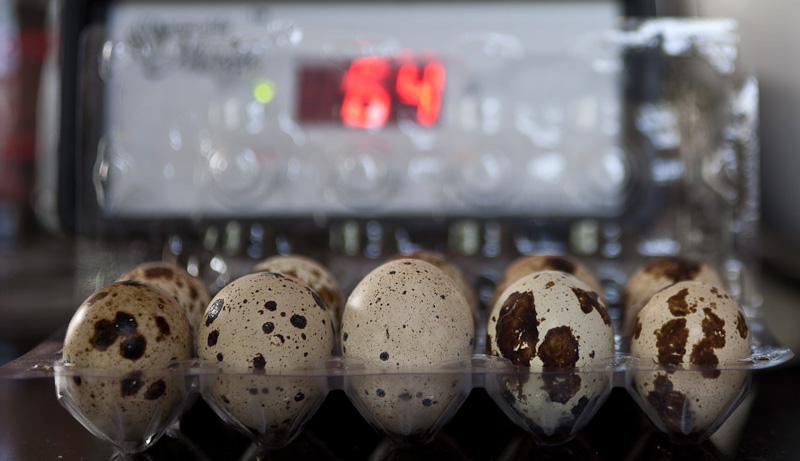
The yellow sphere is a poached quail egg yolk. The recipe instructs me to cook the eggs in a water bath at 64C for an hour, then 64.5C for an hour, then 65C for an hour. This half-degree of accuracy ismore accurate than my thermoregulator is capable of adjusting to, so I went for an hour and a half at 64C, then an hour and a half at 65C. The water bath had vinegar and salt in it, which did something odd and unexpected to the quail eggs.
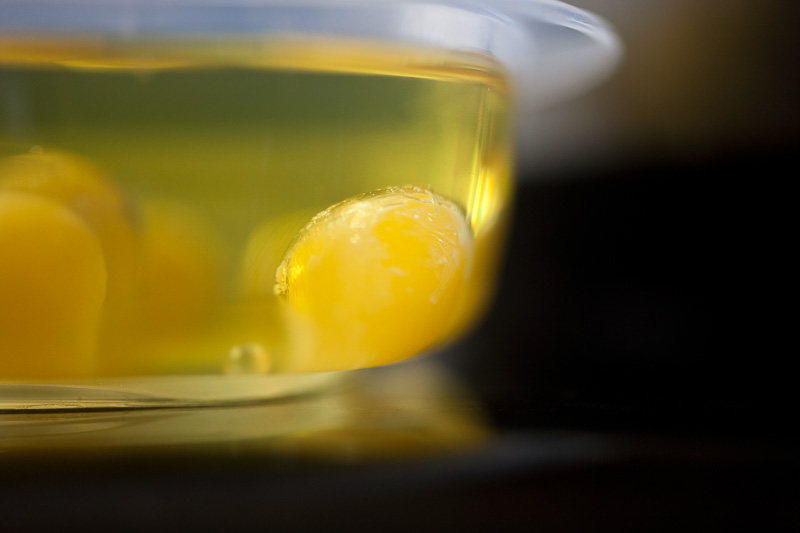
I’m not sure what the point of the vinegar was; does it contribute to flavor? Or dissolve the shell to help with temperature transference? I’ve never cooked an egg in a water bath for this long, so I was quite curious what the end result would be. Removing the yolks was a surgical procedure that took me about an hour to do 10 eggs (I screwed up one); the whites were loosely gelatinous, and the yolks were delicate, barely-solidified, almost like very weak putty or clay. Their flavor was delicate and subtle, but the texture was pretty close to luxurious. I say “pretty close” because I don’t feel like they were EXACTLY perfect, and I’d like to try this again with equipment that allows me finer control.
Once the asparagus and yolk are plated, a spoonful of hot dill custard is laid onto the plate, which is then tilted to let it run. The custard sets extremely quickly, so when the plate is laid back flat it holds its lava-flow-like shape. The plate is then dotted with black pepper vinegar sauce, asparagus tips, and fresh herbs. The recipe for the black pepper vinegar sauce is similar to other agar-based puddings I’ve done in the past, but this one seems erroneous. The first time I made it, the gel I ended up with was extremely firm, and blending it yielded something like sand. Not working in the blender, I tried pushing it through a chinois, but this was totally futile.
Looking back through the recipe, I noticed something: the agar concentration used here is 5%, which is about 10x what’s usually needed to form a gel (concentrations by weight of 0.5% yield a firm gel). The recipe also yields too little to properly blend in a blender. So I made it again using my own math. What I used was:
- 20 black peppercorns (I couldn’t taste any black pepper in the original recipe, so I cranked it up)
- 260g water
- 40g red wine vinegar
- 40g sugar
- 16g kosher salt
- 3g agar agar (0.8% concentration to handle the acidity of the vinegar, which inhibits gelling)
This turned out great, and I was pretty happy that I finally knew how to do something on my own.
Once assembled (plating 3 servings took me about 45 minutes), I found the whole dish to be…just ok? The individual components were delicious, but all together everything got a bit muddled for me. I think I had too much dill custard on the plate firstly (the recipe doesn’t specify how much to use), and the flavors of most of the wrappers were diminished just because they were so small. A mouthful of black trumpet leather tasted amazing, but a tiny bit of it wrapped around pickled asparagus got lost and I couldn’t really pick it out. The most interesting flavor ended up being the black pepper vinegar sauce, just because I could identify it. It’s possible, too, that my perception was tainted by the frustration of trying to plate it…there’s sort of a threshold of effort that, once crossed, sullies my overall impression of a dish. That’s annoying in and of itself because I was cooking from about 9am to 7pm nonstop to put this thing together. After that much time, you clearly want to enjoy the fruits of your labor.
What was a little more fun was trying plating options. I haven’t talked much about this yet, but plating can be HARD. It’s a little like painting, except less forgiving because if you mess up, you pretty much have to start all over. You can’t clean dill custard off a tiny cylinder of delicately-wrapped asparagus. And if you pour too much fast-setting gel onto a plate and it doesn’t run into a nice eye-pleasing shape, you have to scrape it off, clean the plate, reheat the custard, and try again. Watching shows like Top Chef, I have a huge appreciation for these guys who can plate 100 dishes of something they’ve just made up and have all of them look beautiful. It would be pretty awesome to have the luxury of being able to try multiple platings each time, but usually things are so finicky that it takes me a lot of effort just to get a few done well enough to photograph.
For this one, I decided I wanted to play more with it, so I picked three servicepieces to try to plate on each. The one I thought would be most straightforward was a flat rectangular dish; a nice big palette for me to play with. This one was the first I tried the custard on, and you can see I’m clearly very heavyhanded with it there. Everything else I’m more or less happy with, but the custard to me looks pretty fat and clumsy, and the shape doesn’t really inspire a ‘how did he DO that?!’ feeling of wonder.
The second dish is one I haven’t really known what to do with, and I thought I would dislike working with it. It’s arced upwards in both width and height, so I felt like trying to plate a liquid on it would be tough to control. I also pictured the asparagus cylinders sitting tilted on it, which I thought would make the whole thing look like some ugly smiley face or something.
It turned out, though, that this one was a lot of fun to play with. The shape reminded me a bit of a waterslide that used to exist at a lake across the street from the house I grew up in. water was pumped down the slide constantly, and I remember staring at sections of the slide where standing waves would form from the water gushing down, high up on the inner sides of the slide, suspended impossibly. I liked the idea of playing with that with the dill custard. Because the custard set so quickly it was hard to get a nice light-handed river of it flowing down the plate. But the idea itself is cool and I want to explore it further. There was a nicer sense of motion and flow on this plate.
The final plate just looked fucking cool. It’s a wrought-iron candle holder I found at Ikea last week, and I knew I wanted to try using it for this dish. The one downside with it is that there’s no clear ‘instruction’ on where to start eating as there was with the other two plates. But I like the inner and outer sections, and think this could be a cool plate to use again in the future. You can see me playing with the idea of defying gravity here with droplets of sauce climbing up the side of the plate.
